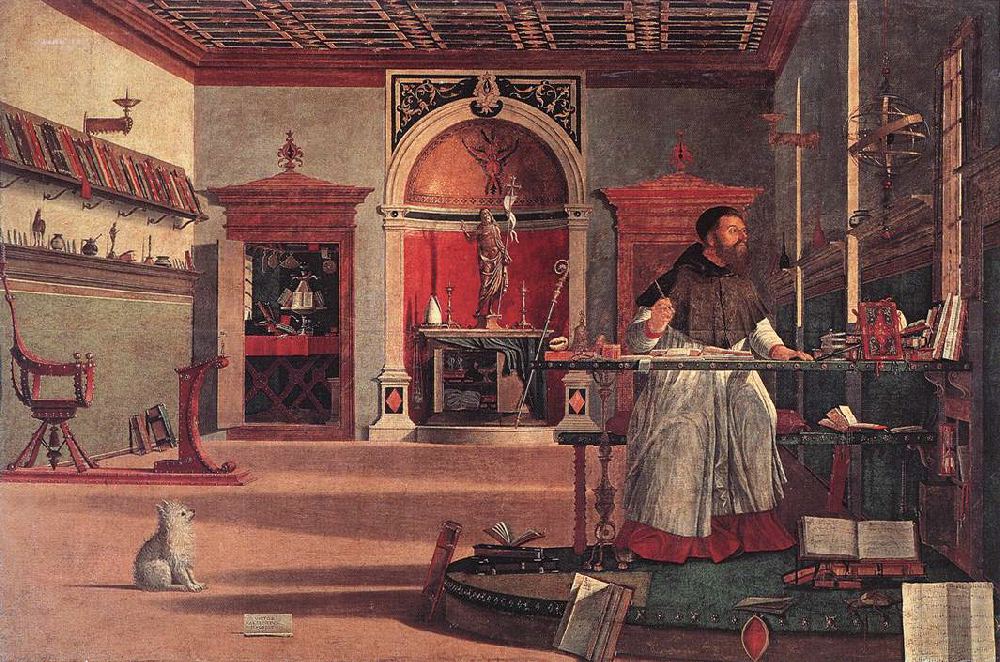
Our first meeting on Athanasius was excellent. For those who could not attend, I thought I would do a post on the main themes of our conversation.
We approached Athanasius' work on the incarnation as a story with five acts.
Act I: Creation
God created the universe out of nothing. Because we were created out of nothing, we were originally mortal beings. In our original state, however, we had the opportunity to become immortal by contemplating God. God created us in his image. We were created so that we could share in God's own life. God created us for union with himself.
Act II: Fall
Human beings turned away from contemplating God by their own free will. The consequences of this turning were 1) we became subject to physical death, that is, we lost our potential for immortality and 2) we became subject to spiritual death, that is, God's image in us was broken.
Act III: Incarnation
God's answer to the Fall was the incarnation, that is, the Word becoming flesh. When Christ took on our fallen human nature, he united it with his divine nature. Because of this union, we can once again share in God's own life. Because the divine and human natures are united in Christ's own body, we can be brought into union with God.
Act IV: Death
For Christ to truly take on our human nature, he had to take on our mortality. Because Christ united himself to our nature, he represented all of us in his death on the cross.
Act V: Resurrection
Because our mortal nature was in Christ, when Christ raised himself from the dead he raised our mortal bodies. As Athanasius says, he "put death to death." Thus, our mortal human nature can now share in God's immortal nature.
For Athanasius, the acts of incarnation, death, and resurrection all fit together. You cannot have one without the others.
His entire book can be summarized in the concept of deification:
"He, indeed, assumed humanity that we might become God." (p. 93) In other words, God became human so that humans might become God. We do not become God in a literal sense. Rather, we become sharers in God's own life. Through Christ we become "deified." We participate in God's qualities of immortality, goodness, love, and holiness. Scott Daniels described this in a unique way: God became like us so that we could become like God.
In light of this story with five acts, Athanasius challenged us to become "monuments of Christ's victory." In his view, the greatest evidence for Christ's victory over death is a transformed life. In Athanasius' context, such transformation included martyrdom, a complete willingness to suffer and die for the sake of Christ. We considered this question in conclusion: what would it look like if our lives and our church became monuments of resurrection, God's victory over death?
Comments are welcome.
 The Ancient Church: Part II
The Ancient Church: Part II Our first meeting on Athanasius was excellent. For those who could not attend, I thought I would do a post on the main themes of our conversation.
Our first meeting on Athanasius was excellent. For those who could not attend, I thought I would do a post on the main themes of our conversation.